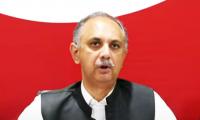If we ever pause to observe the scale of technological advancement human civilization has achieved, our jaws would drop. Satellites orbiting the planet, smart phones delivering on-demand content in less than an eye blink, jets zooming across the sky, and stuff showing up at our doors with a single click.
But despite all this advancement, someone somewhere in Pakistan is dying right now from lack of access to decent healthcare, clean drinking water, or just plain food on table. Inequality levels have peaked to a point where they are synonymous with cruelty. Much gets published in papers and is given in the news about Pakistan’s abysmal economy – the low tax-to-GDP ratio and doddering fiscal and current deficits. But behind these numbers are real human faces – kids who will go to sleep on an empty stomach, mothers who will have no option but to ignore the pleading cries of their starving child, and fathers who will wake up to another day of toil and privation within a system rigged against them.
As of today, 22 million kids are out of school. Try to imagine the faces of these kids who will likely never get to flip through the pages of a book or learn anything of value about this world and their position in it. A single day in the lives of these children is like an invitation to a grand party, only to discover your name is not on the guest list. Not only that, you must also stick around and witness the proceedings as an outsider. From the sidelines. Every single day. And it gets worse, because tomorrow these kids will become parents, and short of a miracle, the same fate will meet their children and their childrens’ children.
If this sounds tragic, then the question on every Pakistani’s mind should be this: how can we change this status quo? Around 100 million people in Pakistan are under the age of 20. The population growth stands at three percent, but per capita growth only two percent. Not only does Pakistan need to desperately ramp up its economic growth, it must do so in a way by which capital is distributed, and not vampirically captured by the entrenched elite.
Unfortunately, gone are the days when setting up factories and assembly lines could save the day. The challenge for Pakistan is that it’s too far behind in the manufacturing race – and catching up looks unlikely. The manufacturing sector as a percentage of GDP is shrinking in most countries, owing largely to automation. Besides, countries like China have scale on their side.
Which is why Pakistan cannot afford to miss the boat on Industry 4.0. If the last few decades were about industrial manufacturing, then this decade is about digital services. Let’s recognize that technology is rapidly transforming every aspect of our lives. We have seen how companies like Uber and Airbnb have disrupted existing business models, cutting the middleman out and delivering a more democratized service model. We are beginning to see more of this model in several other domains like health care, real estate, etc where mobile apps can directly match customers with agents. In other words, we are shifting to a world of digital marketplaces; where previously customers sought service providers, today service providers reach customers first.
This is an incredible opportunity for Pakistan to develop a tech-enabled services sector and invest heavily in its ICT ecosystem. This is a one-two punch: matchmaking services will help tap the vast reserves of idle human capital and at the same time bring a lot of jobs, hitherto undocumented, to the formal economy.
The power to connect people to mobile internet cannot be overstated. In a country where conventional channels of public service have failed the people, and will likely require several years to mature, a smarter approach would be to bypass them altogether – to the extent they can be bypassed. Quality online education must be made available starting from areas with the highest concentration of out-of-school children. Telemedicine must be introduced which delivers personalized healthcare, with hospital visits required only if necessary. Domestic workers should have mobile broadband connectivity so they can leverage apps which pair them with potential employers. Smart sensors should be deployed at scale to monitor and predict air-quality levels, issue flood warnings, and empower farmers to be able to assess crop status and check weather alerts.
This will require the government handing out smart phones, tablets, and laptops at subsidized rates to the people who need them the most. Above all, this will entail massive investments in IoT, 5G, Cloud Computing, AI and Edge Services, among other developments. This is no longer about teledensity, this is about building digital platforms which can absorb vast amounts of data and deliver all manner of services within a fraction of a second. We are looking at wireless drones delivering geospatial data in real time, 5G powered factory automation, or personalized inhouse digital healthcare. IoT is what offers ubiquitous connectivity, 5G enables high data speeds and low latency, cloud computing allows for massive compute and storage, AI provides prediction algorithms, and edge services will support immersive, real-time applications. It is a combination of all these domains, and people skilled in developing them, which will give rise to the tidal wave of digital services that will lift several boats.
None of this is possible if the quality of STEM education remains unchanged. Students' grades will need to be pegged to international contributions/publications, research and innovation – and not merely reproducing solutions from memory.
What is also required is a government that understands when to get out of the way, and to relax regulation where it chokes innovation. A government that is bold and decisive, and ready to reorient itself in alignment with the needs of a modern economy, drawing energy not from the detritus of ancient disputes but the spirit of public service and innovation. After all, It will take a generation of young entrepreneurs to break calcified structures and disrupt old practices and create new value, the returns of which flow outwards where everyone benefits.
Today, a wall stands strong between a Pakistan for few and a Pakistan for most. Every day this wall gets higher, so the few can maintain what the most can never attain. But history has been unkind to builders of such walls and societies which allow them. Pakistan has suffered enough already, it’s time to empower all people and dismantle this wall.
The writer is a freelance contributor.
As usual, any such deal, aiming to resuscitate ailing economy, brings to fore urge and resolve to halt further...
A representational showing sticky notes on a board. — Unsplash/FileThere are some common themes from the lives...
Whether the Daanish Schools effort has been able to live up to its principles or not may be debatable
According to the federal government, last year 653,100 people experienced homelessness on a single night in America
Another advantage for Pakistan is the enhanced teledensity and internet penetration
Both media spheres need to dovetail in amplifying the urgency of addressing climate change at the local, national, and...







